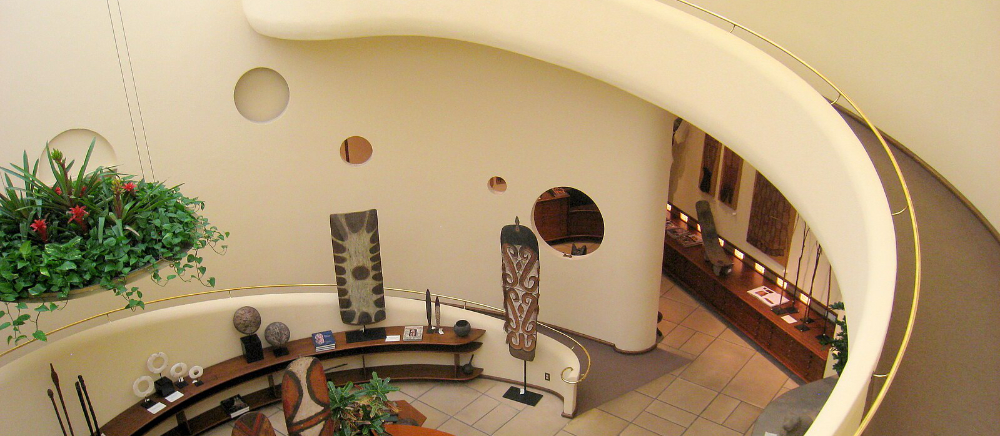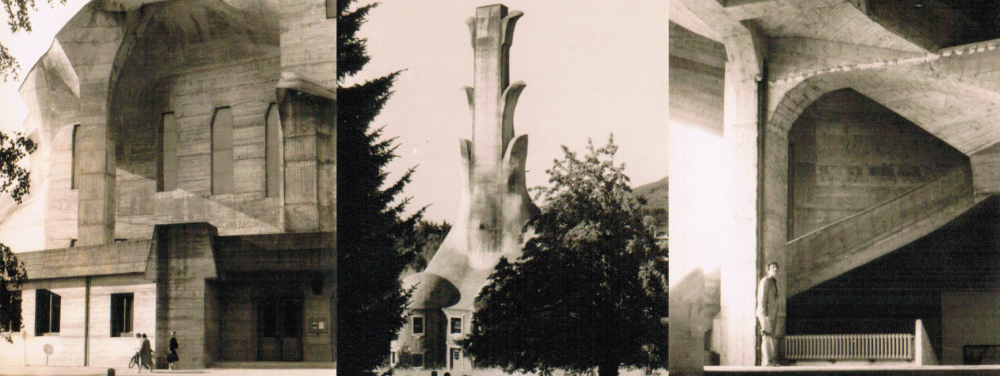Organic architecture
Organic architecture is an architectural style and potentially a philosophy that promotes inspiration from and integrationwith natural surroundings to a greater or lesser degree. This style of architecture may or may not make use of organic forms, though it is likely to be considered to blend in with natural surroundings through interpretation, materiality, and form. The term was coined in the early 1900s by the American architect Frank Lloyd Wright, who was also associated with the Prairie style, and although his buildings might not be considered organic in form, he promoted a philosophy of organic architecture. Prior to this, the architect Louis H. Sullivan in the late 1800's promoted a philosophy of formfollowing function, which was derived from his extensive studies of nature and the implementation of organic ornamentation.
An important figure associated with organic architecture is also the somewhat maverik critic, philosopher, social reformer, architect, esotericist, and natural scientist Rudolph Steiner. Best known today perhaps for the Steiner philosophyof education or Waldorf schools, and as the father of the biodynamic approach to agriculture, he also designed a number of buildings in the early 1900's and introduced his ideas around metamorphosis in architecture. An early example of dometimber architecture was the first Goetheanum he designed, which, due to fire, was redesigned and replaced by the second, concrete and organicallyformed, Goetheanum building, a cultural and spiritual centre for the arts.
It is a much debated term as it is also associated with other architects using higher-tech solutions, such as Frei Otto and Buckminster Fuller. In the early 2000s, David Pearson developed rules for organic architecture, known as the Gaia Charter, in his book The Breaking Wave: New Organic Architecture, in which he references a broad range of movements from Celtic design to Art Nouveau and the Arts and Crafts, as well as the work of Antoni Gaudí.
Twenty years later, John Paull celebrated what he referred to as A Centenary for Organic Architecture in The First Goetheanum, referencing the work of Steiner (Journal of Fine Arts 2020). Today, the term is often associated more readily with organic forms, and although it does not specifically need to be interpreted in this literal sense, it often is.
[edit] Related articles on Designing Buildings
- Architectonics.
- Architectural styles.
- Concept architectural design.
- English architectural stylistic periods.
- Gothic architecture.
- Nature and buildings
- Sustainability in building design and construction.
- The architectural profession.
- The sustainability of construction works.
- Traditional building.
- Urban design.
- What is design?
Featured articles and news
Amendment to the GB Energy Bill welcomed by ECA
Move prevents nationally-owned energy company from investing in solar panels produced by modern slavery.
Gregor Harvie argues that AI is state-sanctioned theft of IP.
Heat pumps, vehicle chargers and heating appliances must be sold with smart functionality.
Experimental AI housing target help for councils
Experimental AI could help councils meet housing targets by digitising records.
New-style degrees set for reformed ARB accreditation
Following the ARB Tomorrow's Architects competency outcomes for Architects.
BSRIA Occupant Wellbeing survey BOW
Occupant satisfaction and wellbeing tool inc. physical environment, indoor facilities, functionality and accessibility.
Preserving, waterproofing and decorating buildings.
Many resources for visitors aswell as new features for members.
Using technology to empower communities
The Community data platform; capturing the DNA of a place and fostering participation, for better design.
Heat pump and wind turbine sound calculations for PDRs
MCS publish updated sound calculation standards for permitted development installations.
Homes England creates largest housing-led site in the North
Successful, 34 hectare land acquisition with the residential allocation now completed.
Scottish apprenticeship training proposals
General support although better accountability and transparency is sought.
The history of building regulations
A story of belated action in response to crisis.
Moisture, fire safety and emerging trends in living walls
How wet is your wall?
Current policy explained and newly published consultation by the UK and Welsh Governments.
British architecture 1919–39. Book review.
Conservation of listed prefabs in Moseley.
Energy industry calls for urgent reform.





























